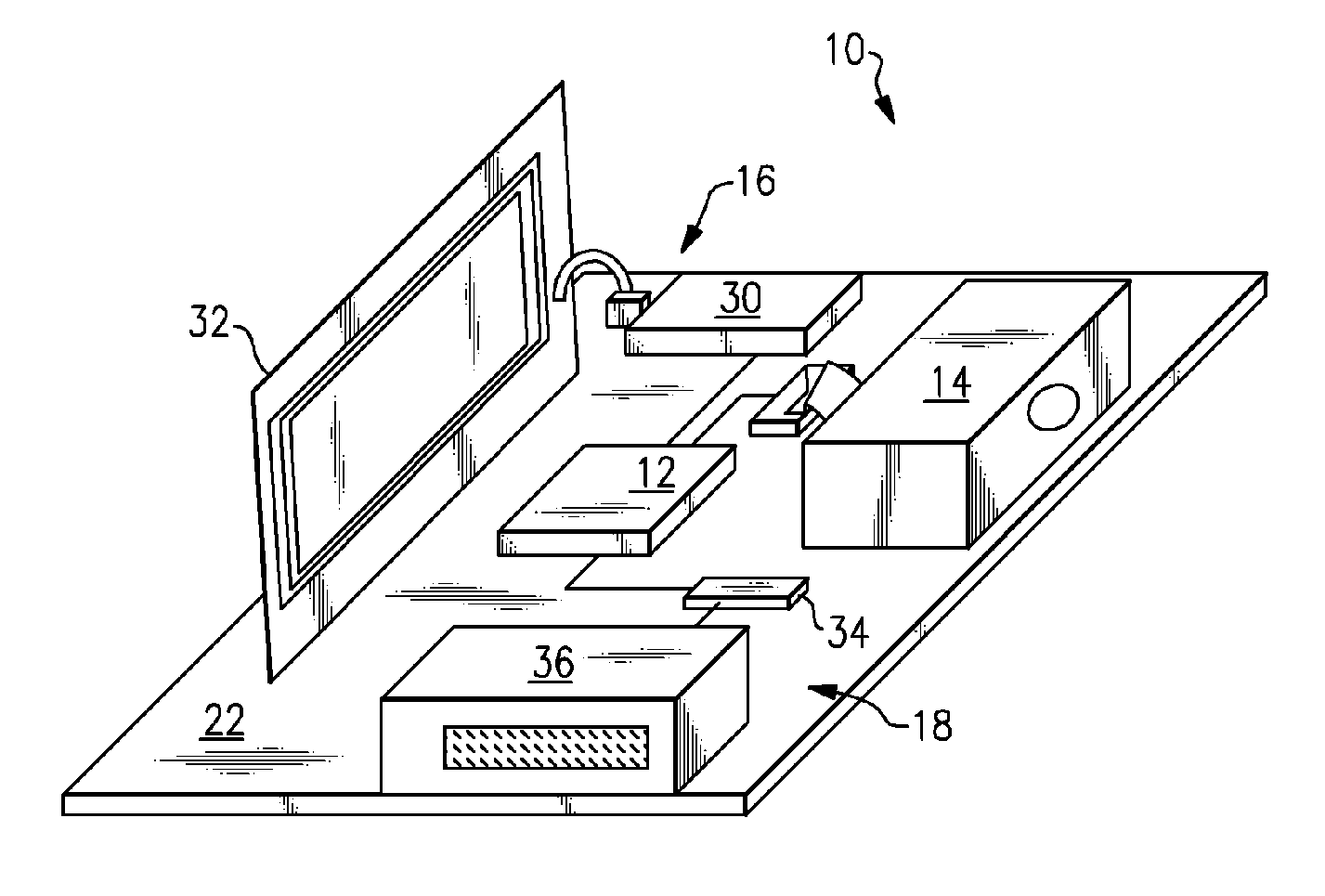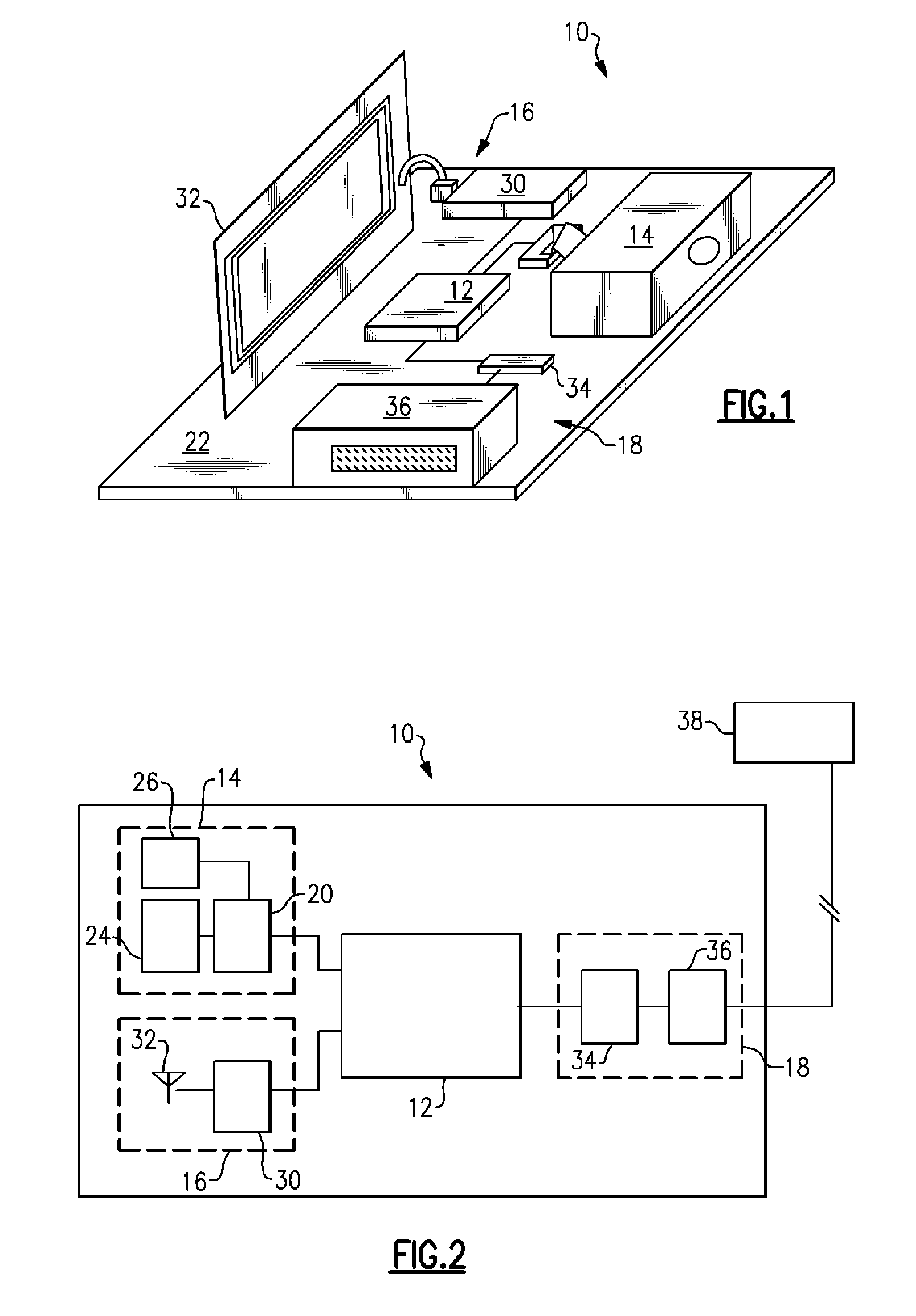Combined radio frequency identification and optical imaging module
a radio frequency identification and optical imaging technology, applied in the field of data collection systems, can solve the problems of lack of image processing ability, lack of true image data, and rudimentary conventions of barcodes and rfids, and achieve the effect of easy integration into a new system
- Summary
- Abstract
- Description
- Claims
- Application Information
AI Technical Summary
Benefits of technology
Problems solved by technology
Method used
Image
Examples
Embodiment Construction
[0018]Referring now to the drawings, wherein like numerals refer to like parts throughout, there is seen in FIG. 1 a combined RFID and optical image module 10 according to the present invention. Module 10 generally comprises a microcontroller 12 that interconnects a first submodule, such as an optical imager 14, and a second submodule, such as a RFID unit 16, to a single host interface 18. Alternatively, module 10 is capable of interconnecting any variety of data capturing devices as submodules and providing host controllability, including optical imagers, RFID transceivers, lasers, scales, thermometers or temperature probes, etc., in any variety of combinations. Module 10 may be arranged on a single printed circuit board 22 and encased as a single unit or housing. Integration of imager 14 and RFID unit 16 through interface 18 allows for combining control of operation of both submodules, such as RFID reading and barcode, through module 10, as will be explained in detail hereinafter....
PUM
 Login to View More
Login to View More Abstract
Description
Claims
Application Information
 Login to View More
Login to View More - R&D
- Intellectual Property
- Life Sciences
- Materials
- Tech Scout
- Unparalleled Data Quality
- Higher Quality Content
- 60% Fewer Hallucinations
Browse by: Latest US Patents, China's latest patents, Technical Efficacy Thesaurus, Application Domain, Technology Topic, Popular Technical Reports.
© 2025 PatSnap. All rights reserved.Legal|Privacy policy|Modern Slavery Act Transparency Statement|Sitemap|About US| Contact US: help@patsnap.com



